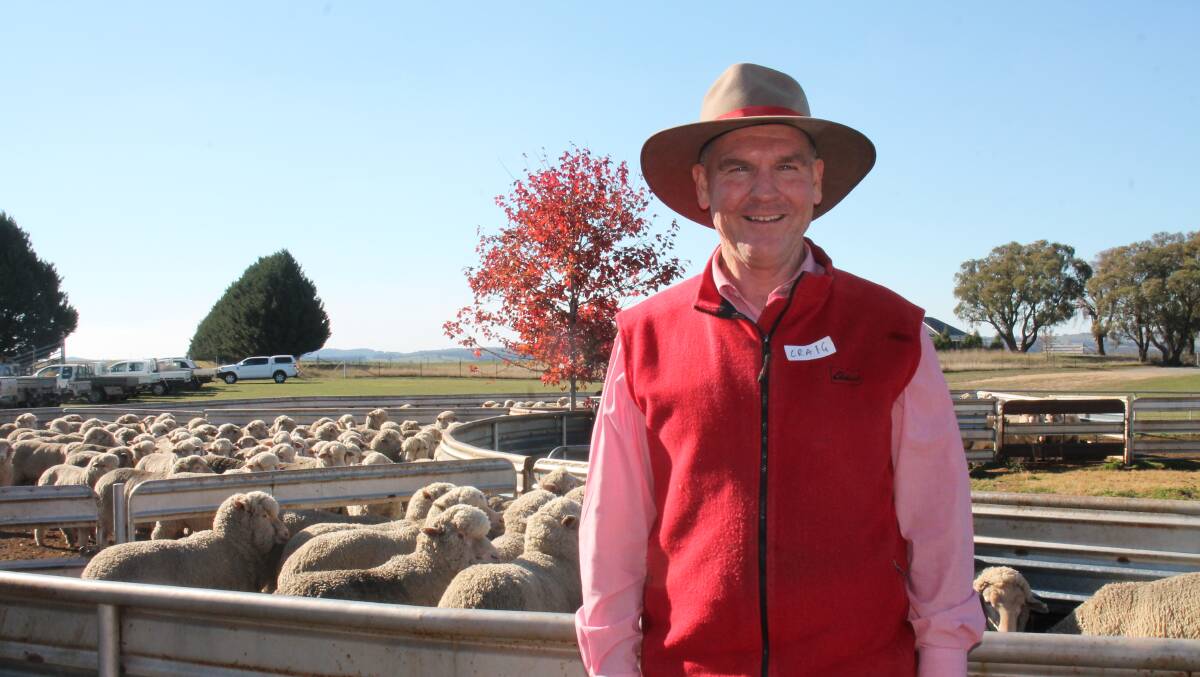
Prices at this weeks' Australian wool auctions saw some drastic falls not seen for some time with the Eastern Market Indicator (EMI) falling 59 cents to close at 1893c per kilogram, clean.
This was despite the Australian dollar falling below US70c for the first time since January 2016.
This was the largest weekly fall in the market since November last year with the EMI now 223c below the record set in August 2018 and 50 cents lower than the corresponding sale of the previous season.
The western region prices generally fell between 45 to 65c on the first day of selling, but by the end of day two, prices across all Merino microns at all three selling centres had fallen by between 50 to 80c.
As a result of the sharp decline in prices the national passed in rate was 21.7pc - the highest figure since October 2018.
In Australian Wool Innovation's (AWI) weekly report, trade consultant Scott Carmody reported there was unanimous pre-sale sentiment this week that prices would fall.
"The lifting of the Chinese ban on imports of RSA (Republic South Africa) wool, albeit with caveats, and the imposition by the USA of import tariffs on Chinese goods produced a state of nervous-ness in trade," Mr Carmody wrote.
"This hesitancy has not been seen since October 2018 when a general lack of business saw the market lose five per cent or almost 100c in just a week.
"Back then it took three weeks for the confidence to return and the market settled then moved to a positive trajectory and continued to slowly appreciate to fully recover the losses in three months."
Craig Brennan, Elders technical wool manager, Yennora, NSW, speaking at a sheep classing workshop in southern NSW on Thursday, said the other aspect the industry is struggling with the increased amount of drought-style finer wools entering the market.
Between 80 to 90pc of the wool in the market is drought affected in some way or another, with yield being the biggest issue, he said.
"Seventeen micron and finer prices have dropped 327c year-on-year," Mr Brennan said.
"It is an issue for the market to try and handle those sort of volumes and obviously a lot of that wool is of poorer quality due to the drought."
Mr Brennan said there are big price differentiations for similar types of microns.
"There are two, three and four dollar difference on wools that might be the same micron, but one is testing sound with a better yield then the other which is from a drought affected area," he said.
"We are talking about wool that is barely 70 millimetres, 21 newtons and 60pc yield - purely drought affected wool."
He said from as far north as Longreach in QLD to Cooma in the southern Monaro region of NSW nobody is missing out on being affected by the drought.
"There are little pockets that are better than others, but in general every area is drought affected to some degree," Mr Brennan said.
"In some areas the tip of the staple looks like it has been sand blasted off.
"The Merino is truely amazing to be able to still produce an article to sell in these type of conditions."
He said just two months ago buyers were struggling with 65pc yield fleeces, they are now struggling with fleeces testing just 55pc yield.
"I would strongly suggest anyone that is shearing that has sheep with dusty backs that they definitely pull them out, because it is a huge issue in the market place at the moment," he said.
However, Mr Brennan said there the market is still good for wools that are testing well with 40 plus newtons and yields of 74 to 75pc.
"The issue that the trade is struggling with at the moment is, with these better wools, they wouldn't be taking up anymore than five to 10pc of the market," Mr Brennan said.
The issue that the trade is struggling with at the moment is, with these better wools, they wouldn't be taking up anymore than five to 10pc of the market
- Craig Brennan, Elders technical wool manager
Crossbreds take biggest hit as supply predicted to hit all time lows
Due to woollen mills not being able to purchase broad Merino wools due to the ongoing drought, the crossbred market of late was hitting record gains.
But by the close of the sales on Thursday, crossbred fleeces had dropped dramatically with 28-micron the hardest hit, losing 143c in the southern region.
This was the largest weekly fall for 28-micron wool since May 2003.
Quantities entering the market are dropping off severely over the next three to four weeks, with Mr Brennan predicting nationally only 20,000 bales entering the market in three weeks time.
"We have never had quantities that low," he said.
"There will be no Fremantle sale - only southern and northern selling centres operating. The stocks are desperately low."
Next week the national quantity reduces to just 25,637 bales rostered on for Sydney, Melbourne and Fremantle.


